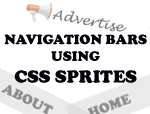There's a lot of buzz around the web about Google plus! I'm sure many, including me, are fascinated about circles! Well, did you find time to check out the other sections - albums on Google+? If not, try it now! You'll find a cool transition effect on hovering your mouse over the albums! Inspired by this, I googled about the same & found a solution to get it work on Blogger. Take a look at the demo here.
PHOTO STACK EFFECT - LIVE DEMO (LOOK AT THE SIDEBAR ON DEMO BLOG)
The main advantage with the above hack is that it works purely with CSS3. No Javascript nor Jquery - only CSS! However, there is one main disadvantage working with pure CSS3 - browser compatibility issues! The above hack works only on browsers that support CSS3! I'll try to get the same effect working on all browsers, with a gradual transition rather than the abrupt change, using Jquery in the upcoming weeks! Anyway, let's get started with this tutorial now...
1. Navigate to "Design>>Edit HTML" and make a backup of your template by clicking on the "Download full template" link at the top of the page. Once the back up is over, search for the following piece of code.
]]></b:skin>
2. Download the following text document - CSS FOR PHOTO STACK EFFECT and paste the code present in it just above the line mentioned step 1.
3. Save your template. To realize the stack effect, declare image tags with class="photo1", class="photo2" and class="image3" respectively. Then, wrap them with an anchor tag using class="album". That's it! Difficult to understand? Then, paste the following code anywhere on your template to realize the final effect.
<a class='album' href='#'>
<img class='photo1' src='IMAGE URL'/>
<img class='photo2' src='IMAGE URL'/>
<img class='photo3' src='IMAGE URL'/>
</a>
<img class='photo1' src='IMAGE URL'/>
<img class='photo2' src='IMAGE URL'/>
<img class='photo3' src='IMAGE URL'/>
</a>
Note: Replace IMAGE URL highlighted in blue with your image URLs to realize the stack effect on your blog. If you wish to extend the same effect for more than 3 photos, then ping me via gtalk or leave a comment, I'll help out to achieve the same!
4. Save your template and view the same on a browser that supports CSS3 - possibly using FF3+!
Over the past few weeks, I've been trying to post articles that are pretty unique on blogger. I would like to receive your opinion about the same. I hope you enjoy the articles on my blog including the one above! Please share your views about the same via comments:) Check out the other interesting tutorials on CSS here - CSS Tricks


















 This article illustrates about creating unique navigation bars using Adode PhotoShop and CSS Sprites. By using CSS Sprites, we achieve the following advantages - save bandwidth (less image size), reduce the number of HTTP requests and make our blog browser compatible.
This article illustrates about creating unique navigation bars using Adode PhotoShop and CSS Sprites. By using CSS Sprites, we achieve the following advantages - save bandwidth (less image size), reduce the number of HTTP requests and make our blog browser compatible.





